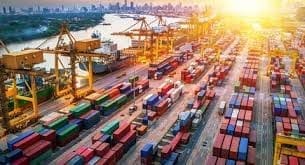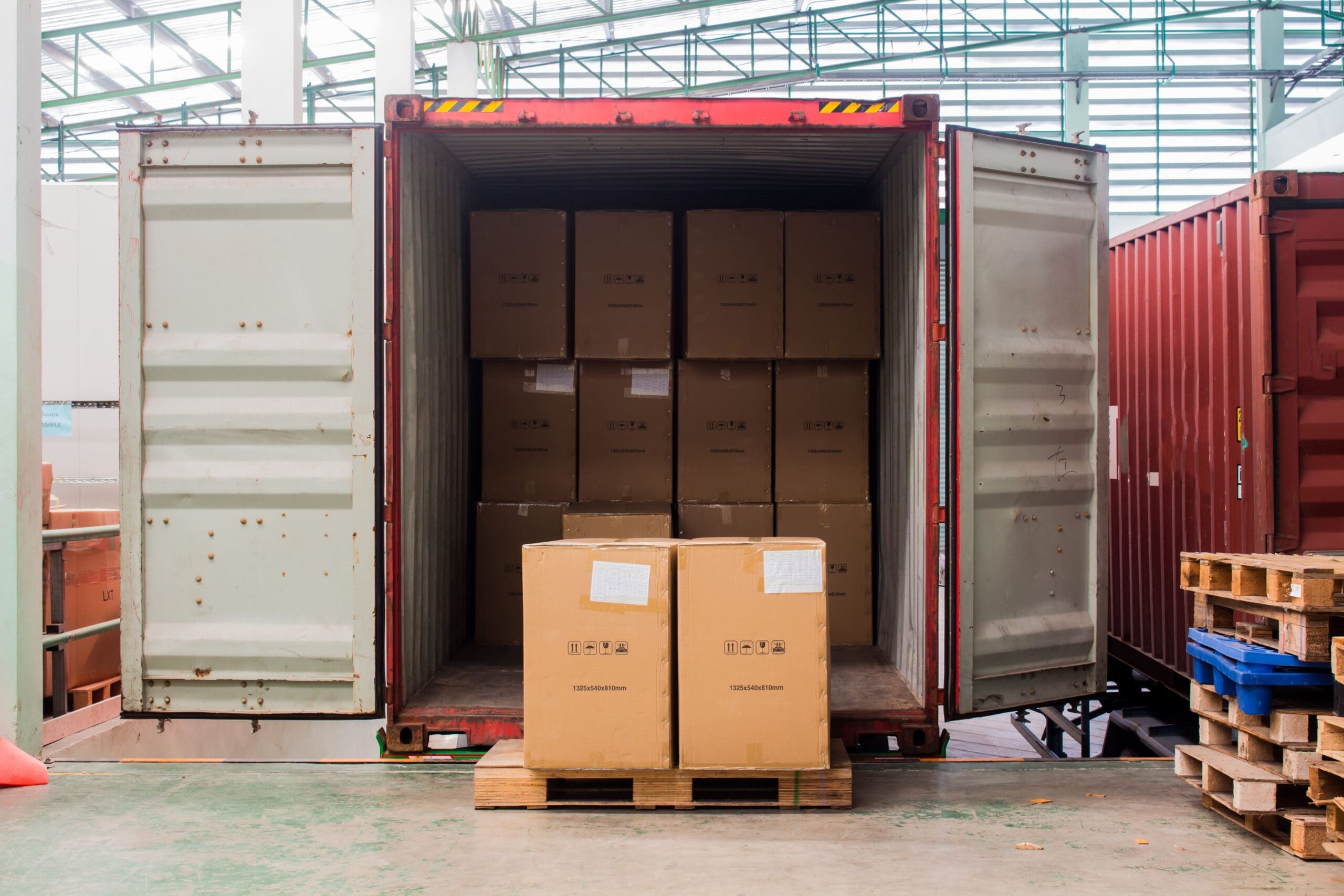Purchasing a shipping container is more than just choosing a size and placing an order — it’s a strategic decision that can impact the success of your project or shipment. Whether you’re using it for storage, export, construction, or modification, there are several critical factors to evaluate, including shipping container condition, certifications, delivery logistics, and local regulations. The market can be overwhelming, especially with varying price points and terminology like “WWT,” “Cargo Worthy,” or “One-Trip.”
We will break down everything you need to know — from selecting the right type of container to understanding certifications, inspecting for quality, and avoiding common pitfalls. If you’re considering a container purchase for the first time (or even as a repeat buyer), these steps, tips, and insights will help you buy with confidence and get the best value for your investment.
1. Define Your Shipping Container Requirements
The first important step is to identify your purpose for purchasing a shipping container. Are you looking for shipping containers for storage, transportation, or construction? Your intended use will dictate the type, size, and condition of the container you need.
2. Choose Between New and Used Shipping Containers

- New Shipping Containers (“One-Trip”): These containers are in near-perfect condition after a single journey from the manufacturer. They are ideal for long-term projects requiring durability.
- Used Shipping Containers: While more affordable, used containers may show wear like rust or dents but can still be structurally sound.
- “Wind and Water Tight” (WWT) – A Used WWT container keeps out wind and water with no holes, broken seals, or roof damage. Good for ground-level storage or local transport.
- “Cargo Worthy” (CW) – Used CW shipping containers pass an inspection for strength and safety. These portable shipping containers may show wear but have no structural damage and most come with a survey certificate if needed or intermodal transport.
- “IICL” Certification- Used IICL containers meet the highest used-container standards. They are often newer than WWT and CW containers but are more expensive as they are closer to New/One-Trip Condition.
3. Select the Right Shipping Container Size
Start by assessing your storage or shipping needs, then select a container size that fits your project. Choosing the right size ensures you’re not overpaying for unused space or coming up short on capacity.
The most common sizes are:
- 20-foot container – Measures 20′ L x 8′ W x 8.5′ H and provides about 1,360 cubic feet of space. Ideal for smaller loads or tight spaces.
- 40-foot container – Offers double the capacity, with approximately 2,720 cubic feet of space. Great for larger shipments or long-term storage.
4. Understand Shipping Container Grades and Certifications
Shipping containers are graded based on their condition:
- Cargo-Worthy Containers (CW)– Certified for international shipping and meeting safety standards. For international transport, ensure your container has a valid CSC (Convention for Safe Containers) certification plate to comply with global safety standards.
- Wind and Water Tight (WWT)– Suitable for storage but may lack international certification for intermodal transportation.
- IICL Certified- A used shipping container that meets the inspection standards set by the Institute of International Container Lessors (IICL)—the highest grading standard in the industry.
5. Inspect Your Shipping Container Before Purchase
Inspecting the container in person is crucial as this ensures you avoid costly repairs later.
Check for:
- Structural integrity (no major dents or rust).
- Properly sealing doors.
- Intact flooring.
6. Plan Delivery Logistics
Once you’ve selected the right container, don’t overlook the importance of preparing for delivery. A successful, stress-free drop-off depends on thoughtful planning and clear communication.
Here’s what to consider:
- Prepare a Level, Solid Surface.
- Make sure the delivery site is flat and firm—ideally gravel, concrete, or compacted dirt. An uneven or soft surface can lead to placement issues or even damage to the container.
- Check for Truck Accessibility
- Most containers are delivered on a tilt-bed or flatbed truck. Ensure your site is accessible for large vehicles—typically, they’ll need at least 60–100 feet of clearance for delivery and unloading, depending on the container size and truck type.
- Allow Adequate Space for Maneuvering
- Ensure there is enough space not just for the container itself, but also for the truck to turn, back in, and safely unload. Obstacles like fences, trees, low-hanging branches, or overhead wires should be addressed ahead of time.
- Confirm Delivery Costs Upfront
- Delivery fees can vary widely based on distance, location accessibility, and whether special equipment (like a crane or forklift) is needed. Get a clear, written quote from your supplier so there are no surprises on delivery day.
- Coordinate Timing and Point of Contact
- Make sure someone is available on-site or by phone during the delivery window to guide placement and answer any last-minute questions from the driver.
- Check Local Regulations (if needed)
- If you’re placing the container in a residential or commercial area, check with your municipality or HOA to see if permits or approvals are required.
7. Research Reputable Shipping Container Suppliers

When it comes to purchasing a shipping container—especially for export or long-term use—choosing the right supplier is just as important as choosing the right container. Working with a reputable, experienced container supplier ensures you receive a unit that meets quality standards, pricing expectations, and delivery timelines.
Here’s what to look for:
- Identify Trusted Suppliers:
- Research companies with a long track record in the shipping container industry.
- Look for suppliers who have been in business for several years and have built a strong reputation like Container Sales Group who has been selling portable shipping containers since 1998.
- Check for Transparency in Pricing:
- Choose suppliers who provide clear, upfront pricing with no hidden fees.
- Ensure that the cost breakdown is detailed, including delivery charges, taxes, and any potential add-ons.
- Look for Quality Assurance:
- Verify if the supplier offers quality control measures, like inspecting containers upon delivery.
- Ask the supplier for their Container Guarantee in writing.
- Read Customer Reviews and Testimonials and Even Ask for References:
- Research online reviews on third-party sites like Google.
- Look for feedback from previous buyers regarding the container’s condition, delivery timelines, and overall experience with the supplier.
- Contact the supplier and ask for references from past clients to get an idea of their service and product quality.
- Compare Multiple Suppliers:
- Don’t settle for the first supplier you find. Compare prices, services, and reputations across several companies.
- Consider not only the cost but also the value they provide in terms of customer service and responsiveness.
- Be cautious of suppliers offering prices that seem too good to be true, as this could be a red flag for scams.
- Look for Industry Affiliations:
- Check if the supplier is affiliated with recognized shipping container organizations, which may signal trustworthiness and adherence to industry standards.
8. Understand Pricing Factors
The price of a shipping container can vary widely depending on several key factors. Understanding what affects pricing will help you make an informed decision and avoid overpaying.
Here’s what to keep in mind:
- Condition of the Container
- New (One-Trip) Containers: Typically, the most expensive, but offer pristine condition and a longer lifespan. Ideal for resale value or conversion projects.
- Used Containers: More budget-friendly and available in various grades such as Cargo Worthy (CW) or Wind & Watertight (WWT). Pricing reflects age, wear, and appearance.
- Size & Type
- Standard sizes include 20ft and 40ft containers, with High Cube (9’6” tall) options costing slightly more due to increased volume.
- Specialized containers (e.g. refrigerated, open-top, or flat-rack) come with higher price tags due to limited availability and specialized features.
- Market Demand & Regional Availability
- Pricing can fluctuate based on global and regional supply and demand.
- Areas near major ports or depots may have better availability and lower prices due to reduced transport costs.
- Modifications & Custom Features
- Customizations such as roll-up doors, insulation, vents, electrical hookups, or paint jobs will increase the overall cost.
- While modifications add value and functionality, be sure to factor them into your budget early.
- Delivery Costs
- Not always included in the sticker price, delivery is influenced by distance, site accessibility, and equipment needed for unloading.
- Buying from a supplier with nationwide inventory (like Container Sales Group) can help you save on delivery by sourcing from the closest location.
9. Check Legal and Zoning Regulations
Before placing a shipping container on your property—whether for storage, construction, or conversion—it’s essential to verify local laws and zoning restrictions. Compliance helps you avoid fines, removal orders, or delays in your project.
- Residential Use
- Many municipalities require permits for using containers as sheds, home offices, or temporary structures.
- Some neighborhoods or HOAs (Homeowners Associations) may prohibit visible containers or impose size, color, or placement restrictions.
- Commercial Use
- Containers used for job sites, storage, or retail purposes often need zoning approvals or temporary use permits.
- In some cities, containers used for business must meet fire, accessibility, and safety codes.
- What You Should Do
- Contact your local zoning or building department to ask about container regulations.
- Request any necessary documentation or applications for temporary or permanent placement.
10. Plan Maintenance for Long-Term Use
Shipping containers are built from durable, are designed to be tough, but routine maintenance is key to keeping them functional and looking good—especially for long-term use or harsh climates.
- Rust Prevention & Treatment
- Inspect your container regularly for scratches, dents, or rust spots, especially along the bottom rails and roof.
- Wire-brush and repaint small rust areas with marine-grade paint to prevent corrosion from spreading.
- Door Function & Hinges
- Apply grease or lubricant to the door hinges and locking rods every few months to keep them easy to operate.
- Make sure doors open and close smoothly to avoid putting stress on the frame or gaskets.
- Seal & Weatherproofing Checks
- Inspect door gaskets and seals for cracks or wear to maintain wind and water tightness (WWT).
- After heavy rains, check the interior for signs of moisture or leaks and seal any vulnerabilities.
- Flooring Care
- Avoid pooling liquids or moisture buildup to prevent rot or mold.
- Structural Integrity
- For containers in long-term stationary use, monitor the foundation or support blocks for shifting or settling.
- Ensure the container remains level to avoid frame warping or door misalignment.
Partnering with a trusted supplier like Container Sales Group means you’ll get guidance every step of the way—from choosing the right container to ensuring a safe, successful delivery. Have questions or ready to schedule your delivery? Call us today at 888-320-5938—we’re here to help!
By following these steps and pro tips, you’ll be equipped to confidently purchase a shipping container that meets your needs while maximizing its value over time.
